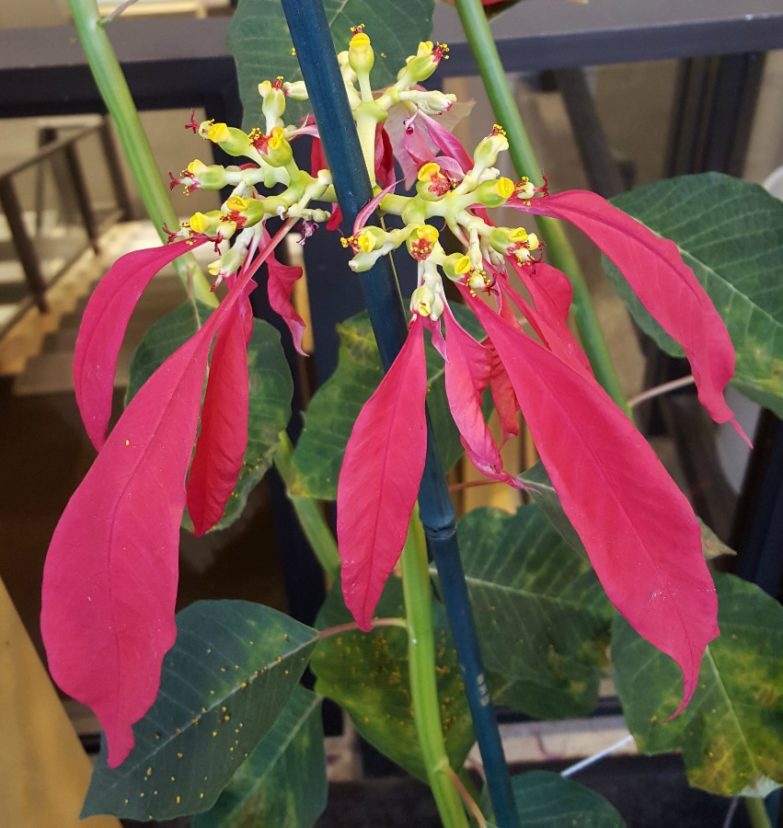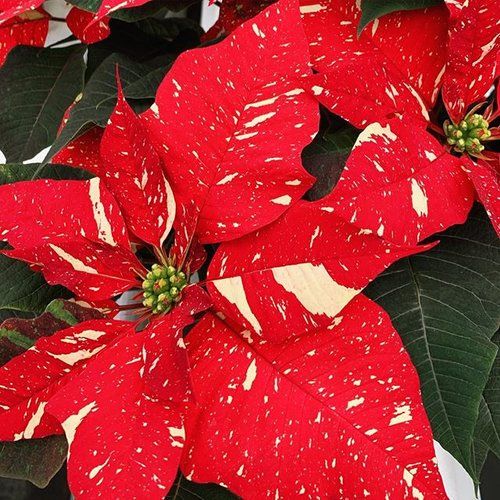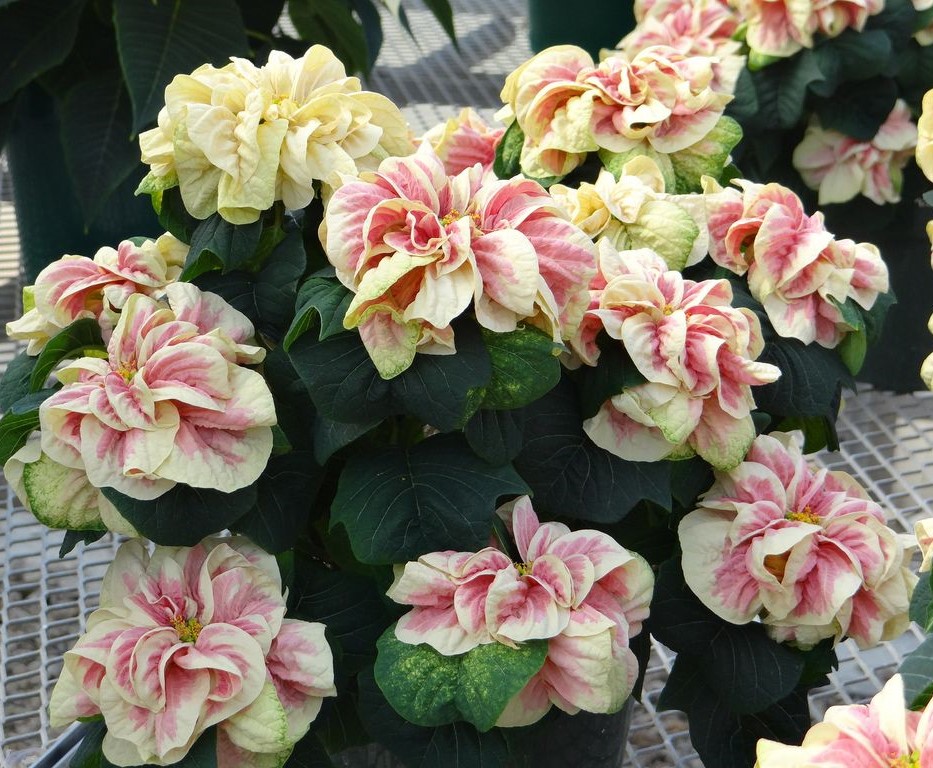Perfectly Pretty Poinsettias
- 2023-11-06
- By mkirk
- Posted in Horticulture, The Garden Buzz
By Sarah Henderson, Colorado Master Gardener
One of the first things I do to prepare for the holiday season is to buy some fresh poinsettia plants. These easy-to-care-for plants always brighten up our home for the holidays. I am not the only one who enjoys these festive plants, as they are the most popular flowering plants sold in the US.

The red “flowers” on poinsettia plants are not actually flowers. They are modified leaves called bracts. The flowers, called cyanthia, are the tiny yellow blooms at the center of the bracts, and they do not have true petals. The bright red bracts evolved to attract pollinators. Native poinsettias have skinny and almost droopy bracts at the top of 12 to 15-foot stems.
Wild poinsettias were brought back from their native Mexico in 1828 by the first US Ambassador to Mexico, Joel Poinsett. Many new cultivars have since been developed. Now poinsettia colors and shapes vary wildly from cream to burgundy and even yellow; though the blue ones are painted. The most commonly sold cultivar is ‘Prestige,’ bred for its strong stems. I am particularly fond of cultivars with white spots and patches on bright red bracts like ‘Red Glitter’ or ‘Jingle Bell Rock.’ For a poinsettia to be enjoyed from fall through the holidays, check out ‘Lemon Glow’ or ‘Autumn Leaves.’ ‘Alaska White’ showcases bright white bracts against dark green leaves. Other cultivars to look for are ‘Viking Cinnamon,’ ‘Prencettia Hot Pink’ and ‘Winter Rose Marble.’


Red Glitter Poinsettia (left), White Rose Marble Poinsettia (right). Photos: pinterest.com.
When selecting poinsettias to bring home, choose full, balanced plants with dark green foliage all the way down the stem. Select plants with unopened flowers that are not drooping or wilting.
Poinsettias need moderately moist soil and should not be allowed to dry out completely; nor should they sit in standing water. Remove the plant from the decorative foil, and water until the soil is saturated. Poinsettias do best with six hours of bright, indirect light each day. Do not fertilize them while blooming. They also prefer temperatures between 60° to 70° away from drafts. Avoid excessive heat from vents, appliances or fireplaces.
Poinsettias will last long after the holidays, and with a little care can be forced to rebloom. Refer to this fact sheet from Clemson University for details.
Horticulture Resources
- Garden Buzz Archives
- CSU Extension Resources
- Colorado Master Gardener Program
- Foothills to Plains Native Plant Master Program
- Native Bee Watch Community Science Program
- The Co-Hort Blog
- PlantTalk Colorado
- Soil Testing
- Plant Select
- Emerald Ash Borer
- Japanese Beetle
- Colorado State Forest Service
- Ask an Expert


